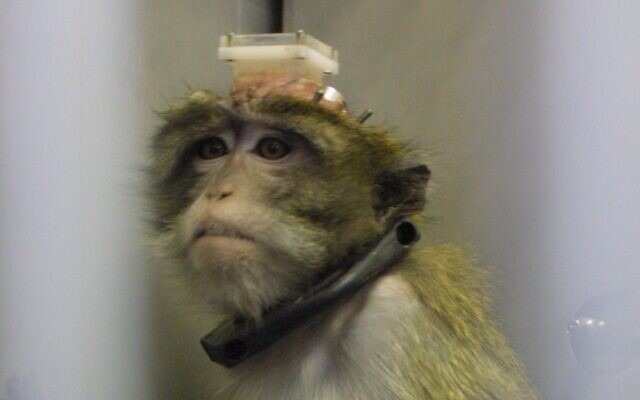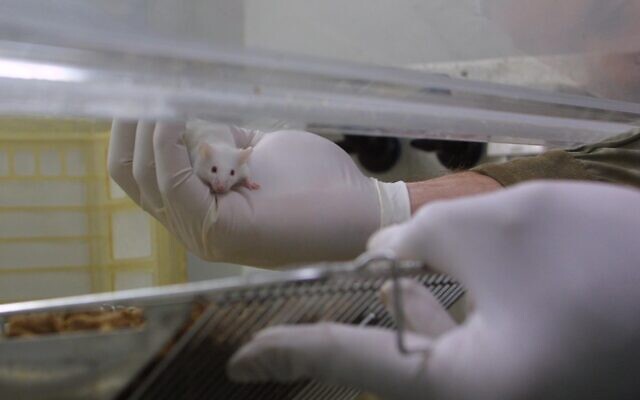Over 400,000 Experiments on Animals in Israel Last Year
Nearly half of the 3,537 projects that took place in 2019 involved subjecting the animals involved to the highest levels of pain on scale.

The Health Ministry on Monday published an annual accounting of the numbers of animals used in experiments last year, saying the coronavirus crisis and the rush to develop a vaccine against it underlined the potential that animal experiments hold for curing humans.
Yet less than half (41.6 percent) of permits for experimentation were connected to health, medicine, and pain relief, with 48.9% for the undefined “furthering of scientific research,” 8.6% for “testing or producing materials or objects,” and the remaining 0.9% for educational and teaching purposes.
In 2019, 402,412 experiments on animals were carried out, the figures show. This was lower than the years 2016 to 2018 but higher than each year stretching from 2004 to 2015.
The figures do not include tests conducted on tens of thousands of animals by the defense establishment without independent monitoring.
Nearly half of the 3,537 projects (47.8%) that took place last year involved subjecting the animals involved to the two highest brackets of pain, out of five.
The breakdown of animals used in the experiments, details of which are available only in Hebrew, included 30 apes, 1,905 cows, 1,650 pigs, 21 horses, 20,275 birds (mostly chickens), 28,443 rats, nearly 244,000 mice, and one camel.

More than 102,000 cold blooded creatures, most of them fish, were also used.
There were no experiments last year on carnivores (such as cats, dogs, jackals and foxes), compared with 15 the year before.
The ministry said that there was “scrupulous implementation” of the principles accepted in Israel and worldwide for experimenting on animals, which favored choosing those as low as possible on the developmental scale for each experiment.
Around a third of permit requests were answered by the relevant permits committee after a first round of discussion, the ministry reported, with the rest requiring two to six rounds during which applicants were asked to “make corrections, with the aim of reducing the number of animals, replacing the type of animal with animals lower on the developmental scale, and reducing the potential for pain.”
The ministry claimed that Israel is a world leader when it comes to rehabilitating animals such as apes, carnivores, livestock and wild animals that have undergone experiments.
But a breakdown for 2019 shows that roughly 360,000 out of the total of 402,412 died, while 95 were returned to nature (62 bats, 20 warblers, six egrets, four herons, and three crows).
Another 1,106 creatures that were adopted after experimentation included 1,010 fish, 84 rabbits and 12 guinea pigs. Of the horses, 10 were rehabilitated and 11 were still in use. Of the cows, 1,300 out of 1,905 were returned to their herds, compared with just 12 out of 1,650 pigs.
In 2013, the ministry established a research fund to support the development of alternatives to animal experiments which would still yield the required results. To date, 19 such projects have been funded. Last year, the ministries of health and science issued a joint call for applications.
Many scientists insist that there are no substitutes for animal experiments when it comes to developing medicines.
But Oren Ben-Yosef of the Israeli Society for the Abolition of Vivisection said, “As usual, the report says that less than half of the experiments were carried out for medical reasons.”
Those who supported experimenting on animals should ask the National Council for Animal Experimentation why so many creatures were killed after the experiments, even if they were healthy and capable of continuing to live normally, he went on.
“Before the council boasts about its rehabilitation prowess, it should, in the same breath, admit killing [animals in an amount] that any researcher will agree is not necessary for the experiment.”
He added, “Most importantly, animals are not objects… This fact cannot be hidden behind reports and numbers. Behind each pair of eyes, be it of monkeys or of mice, are creatures sentenced to hell for no fault of their own.”



comments